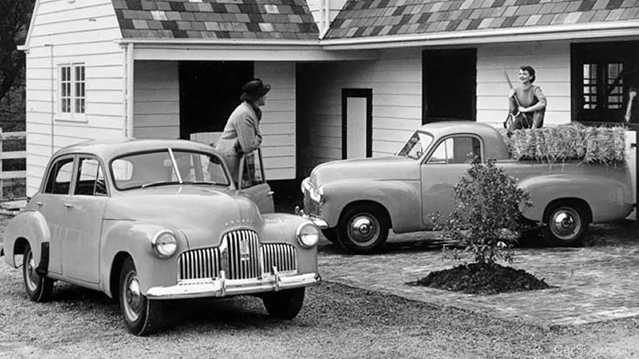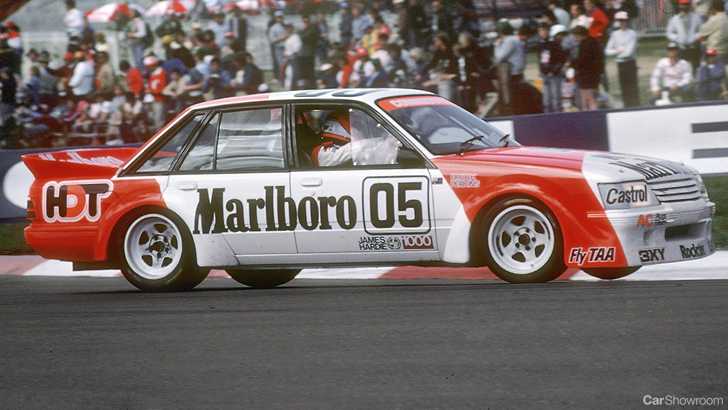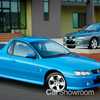Yesterday’s announcement certainly took many by surprise. How could the bulwark of Australian automotive manufacturing come to an end and why did it happen? To get a better overview of what’s happened, we need to look to the past.
The Holden brand started out 164 years ago as a saddlery manufacturer in South Australia by James Alexander Holden, but it wouldn’t be until the 1940’s that his grandson, Sir Edward Wheewall Holden, a noted industrialist, would take his family’s carriage and saddlery business into a partnership with General Motors Company to become Australia’s first automobile manufacturer. By 1948, the first Holden – simply known as the “Holden” – rolled off the production line at Fishermans Bend, Melbourne.
Thereafter, Holden’s only way forward was up. To illustrate, Holden’s market share in Australia in 1954 was 1 in 3 cars. By 1958, 1 in 2 cars on Australian tarmac had a Holden badge on it. Eventually, the brand manufactured its one millionth car in 1962. Holden lead the market for 25 consecutive years until 1978, before giving way to Ford for most of the 80s.
The most beloved model from Holden (in ‘modern’ times) is the Commodore. The large saloon car was such a hit, that by 2010 it had been the top selling car for 15 straight years in Australia. It was a car made for Australia by Australians, and this fact truly galvanized the people, so much so that Ford’s rival saloon, the Falcon, was slipping behind in sales and popularity. The solution? Racing.
Motorsport is a huge part of the Commodore and indeed, the Holden image. In the early 90s, the concept of a formula centered around V8-powered Falcons and Commodore’s became the basis of the Australian Touring Car Championship. So successful was this racing series that it eventually morphed to become the infamous Supercars Championship we all know and love today.
Back in the day (and possibly till today), success on the race track was paramount to car sales. When you won on the track on a Sunday, you sold in the dealerships on a Monday, and it showed. In 1991, Holden sold 50,820 Commodores nationwide. By 1998, that figure jumped to 94,642 units, the highest recorded sales figure ever for the model. That momentum spilled over into the new millennium but it simply could not be sustained.
The decline has been happening steadily since 2003 with 86,553 units sold to just 5,417 sold in 2019. The shutting down of the Australian manufacturing site in 2017, sealed the fate of the company. The fully-imported Insignia-based Commodore ZB losses its edge without a V8 motor under the bonnet and rear-wheel drive. The company announced on the 10th of December 2019 that the ZB Commodore would be discontinued in late 2019.
Long gone are the fire-breathing V8 ‘Aussie muscle’ cars of yesteryear. These days, Holden is relegated to selling SUV’s such as the Trailblazer, Arcadia, Trax, Equinox, as well as the Colorado ute, and that was before yesterday’s earth-shattering announcement. The decline is due in part to shifting buying patterns and the rising popularity of SUVs.
“The large sedan was the cornerstone of Australian and New Zealand roads for decades, but now with more choice than ever before, customers are displaying a strong preference for the high driving position, functionality and versatility of SUVs and utes” said Holden interim chairman and managing director, Kristian Aquilina.
However, even the wide selection of SUV’s it put to market could not save Holden from financial woes. In 2019, their market share fell to a historical low of 4.1 percent, which is down from 5.2 percent in 2018. The sales decline came to a crunch in November 2019, when Holden sold just 2,668 vehicles – fewer than luxury marque Mercedes-Benz – to garner only 3.1 per cent market share, its lowest market slice in the company’s 70 plus year history.
The demise of the Commodore and indeed Holden, begs the question of what will happen to the brand’s Supercar motorsport presence as well. Bear in mind, Holden has won the infamous Bathurst 1000 race a record 26 times. However, in an exclusive put out by CarAdvice, they reckon the Chevrolet Camaro could replace the Commodore on the racetrack from 2021 to go head-to-head with the Ford Mustang. The rollout of this program could possibly be spearheaded by a new niche sub-brand called General Motors Specialty Vehicles (GMSV).
HSV or Holden Special Vehicle could possibly become GMSV and could possibly be used to sell right-hand drive vehicles such as the Tahoe, Suburban, Camaro, Silverado and (hopefully) the all-new mid-engine C8 Corvette in Australia. Though at present time, it isn’t clear how this is going to work. Only time will tell.
In the meantime, Holden will be slowly winding down its nationwide operation, while selling off its pre-existing stock. General Motors says the 200 or so employees will continue to remain in their present roles to ensure its obligation for warranty claims, servicing, spare parts and recalls.
Watch this space for more information and developments.





























